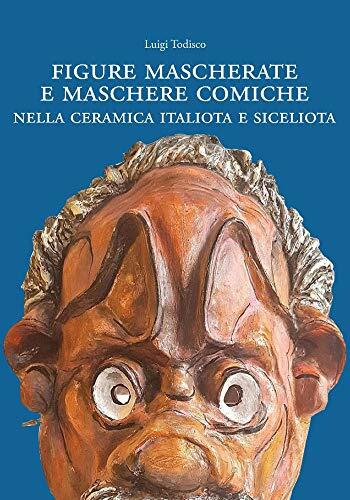
Figure Mascherate E Maschere Comiche Nella Ceramica Italiota E Siceliota
还没有评分
Humor
Manga
Graphic Novels
格式
平装书
页数
188
语言
意大利语
已发布
Oct 1, 2020
出版商
L'Erma Di Bretschneider
ISBN-10
8891320838
ISBN-13
9788891320834
描述
Delving into the rich tapestry of ancient Italian and Sicilian ceramics, this work by Luigi Todisco explores the fascinating interplay between artistic expression and cultural identity. The author meticulously examines various ceramic pieces that showcase figure mascherate, or masked figures, and comical masks, which serve as a testament to the intricate narratives woven into the fabric of Greek and Roman societies.
Throughout the pages, Todisco presents a thorough analysis of the stylistic elements and thematic representations found in these artifacts. He discusses how humor and irony were skillfully incorporated into everyday objects, revealing insights into social dynamics and rituals of ancient communities. The vivid imagery captured in the ceramics paints a vivid picture of the past, inviting readers to reflect on the significance of art as a window to civilization.
With a scholarly yet accessible approach, Todisco’s work appeals to both specialists in archaeology and general readers interested in the cultural history of southern Italy. The relevance of masked figures and their comical counterparts extends beyond mere decoration, acting as a lens through which to view the complexities of human expression in a bygone era.
Ultimately, this exploration of ceramics serves not only as an academic endeavor but also as a celebration of the creativity and humor of ancient societies. By bringing these artifacts to life, Todisco encourages readers to appreciate the subtleties of both artistry and the shared human experience across time.
Throughout the pages, Todisco presents a thorough analysis of the stylistic elements and thematic representations found in these artifacts. He discusses how humor and irony were skillfully incorporated into everyday objects, revealing insights into social dynamics and rituals of ancient communities. The vivid imagery captured in the ceramics paints a vivid picture of the past, inviting readers to reflect on the significance of art as a window to civilization.
With a scholarly yet accessible approach, Todisco’s work appeals to both specialists in archaeology and general readers interested in the cultural history of southern Italy. The relevance of masked figures and their comical counterparts extends beyond mere decoration, acting as a lens through which to view the complexities of human expression in a bygone era.
Ultimately, this exploration of ceramics serves not only as an academic endeavor but also as a celebration of the creativity and humor of ancient societies. By bringing these artifacts to life, Todisco encourages readers to appreciate the subtleties of both artistry and the shared human experience across time.